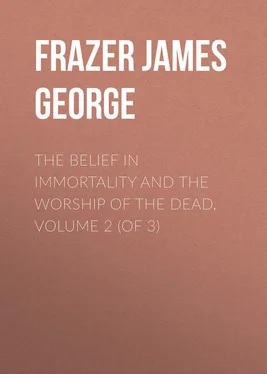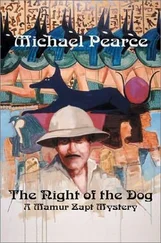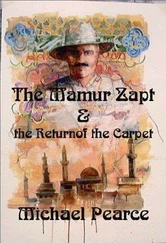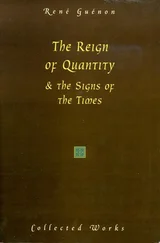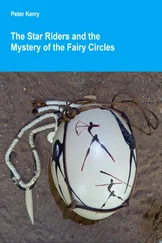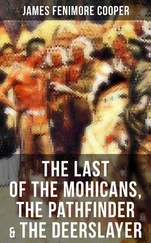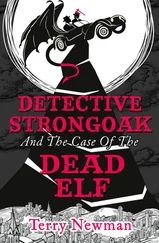James Frazer - The Belief in Immortality and the Worship of the Dead, Volume 2 (of 3)
Здесь есть возможность читать онлайн «James Frazer - The Belief in Immortality and the Worship of the Dead, Volume 2 (of 3)» — ознакомительный отрывок электронной книги совершенно бесплатно, а после прочтения отрывка купить полную версию. В некоторых случаях можно слушать аудио, скачать через торрент в формате fb2 и присутствует краткое содержание. Жанр: foreign_antique, foreign_prose, на английском языке. Описание произведения, (предисловие) а так же отзывы посетителей доступны на портале библиотеки ЛибКат.
- Название:The Belief in Immortality and the Worship of the Dead, Volume 2 (of 3)
- Автор:
- Жанр:
- Год:неизвестен
- ISBN:нет данных
- Рейтинг книги:3 / 5. Голосов: 1
-
Избранное:Добавить в избранное
- Отзывы:
-
Ваша оценка:
- 60
- 1
- 2
- 3
- 4
- 5
The Belief in Immortality and the Worship of the Dead, Volume 2 (of 3): краткое содержание, описание и аннотация
Предлагаем к чтению аннотацию, описание, краткое содержание или предисловие (зависит от того, что написал сам автор книги «The Belief in Immortality and the Worship of the Dead, Volume 2 (of 3)»). Если вы не нашли необходимую информацию о книге — напишите в комментариях, мы постараемся отыскать её.
The Belief in Immortality and the Worship of the Dead, Volume 2 (of 3) — читать онлайн ознакомительный отрывок
Ниже представлен текст книги, разбитый по страницам. Система сохранения места последней прочитанной страницы, позволяет с удобством читать онлайн бесплатно книгу «The Belief in Immortality and the Worship of the Dead, Volume 2 (of 3)», без необходимости каждый раз заново искать на чём Вы остановились. Поставьте закладку, и сможете в любой момент перейти на страницу, на которой закончили чтение.
Интервал:
Закладка:
§ 4. The Beliefs of the Maoris concerning the Souls of the Dead
When a chief died, a loud howl or wail announced the melancholy event, and the neighbours flocked to the scene of death to testify their sorrow. The wives and near relations, especially the women, of the deceased displayed their anguish by cutting their faces, arms, legs, and breasts with flints or shells till the blood flowed down in streams; it was not wiped off, for the more the person of a mourner was covered with clotted gore, the greater was esteemed his or her respect for the dead. Sometimes relatives would hack off joints of their fingers as a token of grief. Mourners likewise cut their hair, the men generally contenting themselves with clipping or shaving it on one side only, from the forehead to the neck. The eyes of the dead were closed by the nearest relative; and the body dressed in the finest mats, decked with feathers, and provided with weapons, lay in state for a time. After the first day a brother of the deceased used to beat the body with fresh flax gathered for the purpose; this he did to drive away any evil thing that might be hovering about the corpse. In the olden time one or more of the chief's wives would strangle themselves, that their souls might accompany their dead lord and wait upon him in the other world, and with the same intentions slaves were killed, lest the great man should lack attendants in the spirit land. 51 51 W. Yate, An Account of New Zealand , pp. 135 sqq. ; J. Dumont d'Urville, Voyage autour du Monde et à la recherche de la Pérouse, Histoire du Voyage (Paris, 1832-1833), ii. 541 sq. ; Servant, "Notice sur la Nouvelle-Zélande," Annales de la Propagation de la Foi , xv. (1843) p. 25; E. Dieffenbach, Travels in New Zealand , ii. 62, 118; W. Brown, New Zealand and its Inhabitants , pp. 15 sqq. ; G. F. Angas, Savage Life and Scenes in Australia and New Zealand , i. 331; A. S. Thomson, The Story of New Zealand , i. 185 sqq. ; R. Taylor, Te Ika A Maui, or New Zealand and its Inhabitants , Second Edition (London, 1870), pp. 217 sq. ; E. Tregear, "The Maoris of New Zealand," Journal of the Anthropological Institute , xix. (1890) pp. 104 sq.
The body was kept for three days because, we are told, the soul was believed not to quit its mortal habitation till the third day. 52 52 J. Dumont d'Urville, op. cit. ii. 541.
The mode of disposing of the corpse differed in different districts and according to the rank of the deceased. In some places a grave was dug in the house and the body buried in a sitting posture, the legs being kept in that position by bandages or doubled up against the chest. In the grave the dead man retained the fine garments in which he had been dressed together with the family ornaments of jade and shark's teeth. With him also was usually interred his property, especially the clothes which he had worn and everything else that had touched him during his last illness. The weapons of a warrior were laid near him that he might be able to fight his battles in the spirit land. In other places the corpse was laid in a box on a stage; or two pieces of an old canoe were set upright in the earth, and in the hollow between them the body was seated on a grating so as to allow the products of decomposition to drip through on the ground. In other places again, the corpse was laid in a sort of canoe-shaped coffin and deposited among the branches of a tree in a grove, where it remained for several months. This burial in the branches of a tree seems to have been usually adopted for the bodies of commoners; the corpses of chiefs, enclosed in coffins, were placed in mausoleums, carved and painted red, which were raised on pillars. Whether buried in the earth or placed in a tree or on a stage, the body was left until the flesh had so far decayed as to permit of the bones being easily detached; there was no fixed time allowed for decomposition, it might vary from three months to six months, or even a year. When decay was thought to have proceeded far enough, the bones were dug up or taken down from the stage or tree and scraped; the ornaments also were removed from the skeleton and worn by the relatives. In the south, where the custom was to bury the dead in the ground, this disinterment took place four weeks after the burial; the bones were then buried again, but only to be dug up again after a longer interval, it might be two years, for the final ceremony. When this took place, all the friends and relatives of the dead were summoned to assist, and a great feast was given: the bones were scraped, painted red, decked with feathers, and wrapped up in mats. The precious bundle was then deposited in a small canoe or a miniature house elevated on a pole; or it was carried to the top of some sacred tree and there left on a small stage. Sometimes the bones were concealed in a hollow tree in a secret place of the forest, or hidden away in one of the numerous limestone caverns or in some lonely and inaccessible chasm among the rocks. The motive for secret burial was a fear lest an enemy should get possession of the bones and profane them by making fish-hooks out of them or converting the skull into a baler for his canoe. Such a profanation was deemed a deadly insult to the surviving relatives. After a burial the persons who had dressed or carried the corpse, and all indeed who had had anything to do with it, repaired to the nearest stream and plunged themselves several times over head in the water. 53 53 J. Dumont d'Urville, op. cit. ii. 543 sq. ; W. Yate, op. cit. p. 137; Servant, "Notice sur la Nouvelle-Zélande," Annales de la Propagation de la Foi , xv. (1843) p. 25; E. Dieffenbach, Travels in New Zealand , ii. 62 sqq. ; G. F. Angas, Savage Life and Scenes in Australia and New Zealand , i. 331; A. S. Thomson, The Story of New Zealand , i. 188; R. Taylor, Te Ika A Maui , pp. 218 sqq. ; E. Tregear, "The Maori of New Zealand," Journal of the Anthropological Institute , xix. (1890) p. 105; Elsdon Best, "Cremation among the Maori Tribes of New Zealand," Man , xiv. (1914) p. 110.
In some districts the removal of the bones from their temporary to their final resting-place was the occasion of a grand annual festival in which several neighbouring tribes took part. The bones of all members of the tribes who had died within the year were taken down from the stages or trees where the bodies had been temporarily deposited. The grave-clothes having been removed, the mouldering remains were wrapped in new blankets and carried in procession, attended by the crowd, to a place where they were deposited on a carpet of leaves. Should any putrid flesh be found still adhering to the bones, it was scraped off and buried on the spot. A few old women, dressed in their best, oiled from head to foot, and plastered with raddle, received the skulls into their laps. While they held them thus, a funeral ode was sung and speeches, loud and long, were delivered. Then the bones were tied up, decked with feathers of the gannet, rolled up in blankets, and carried to their last place of rest in a sacred grove, where they were left, securely fastened up and gaudily decorated with red and white. Having thus discharged their duty to the dead, the living gave themselves up to festivity; they ate and drank, danced, sang, whistled, wrestled, quarrelled, bought and sold. This Holy Fair, which went by the name of Hahunga, lasted several days. At the end of it the mourners, or revellers, dispersed and returned to their homes, laden with food which had been made ready for them by their hosts. 54 54 W. Yate, An Account of New Zealand , pp. 137-139; Servant, "Notice sur la Nouvelle-Zélande," Annales de la Propagation de la Foi , xv. (1843) pp. 26 sq. The name Hahunga is doubtless connected with the verb hahu which means "to exhume the bones of dead persons before depositing them in their final resting-place." See E. Tregear, Maori-Polynesian Comparative Dictionary , p. 42, s. v. "hahu."
Great importance was attached to the final disposal of the remains of the dead. According to one account, the soul of the dead man could not rest till his bones were laid in the sepulchre of his ancestors, which was often a natural cave or grotto. There they were deposited on a shelf or platform a few feet above the floor of the cavern. 55 55 J. Dumont d'Urville, op. cit. ii. 543, 545.
Интервал:
Закладка:
Похожие книги на «The Belief in Immortality and the Worship of the Dead, Volume 2 (of 3)»
Представляем Вашему вниманию похожие книги на «The Belief in Immortality and the Worship of the Dead, Volume 2 (of 3)» списком для выбора. Мы отобрали схожую по названию и смыслу литературу в надежде предоставить читателям больше вариантов отыскать новые, интересные, ещё непрочитанные произведения.
Обсуждение, отзывы о книге «The Belief in Immortality and the Worship of the Dead, Volume 2 (of 3)» и просто собственные мнения читателей. Оставьте ваши комментарии, напишите, что Вы думаете о произведении, его смысле или главных героях. Укажите что конкретно понравилось, а что нет, и почему Вы так считаете.
